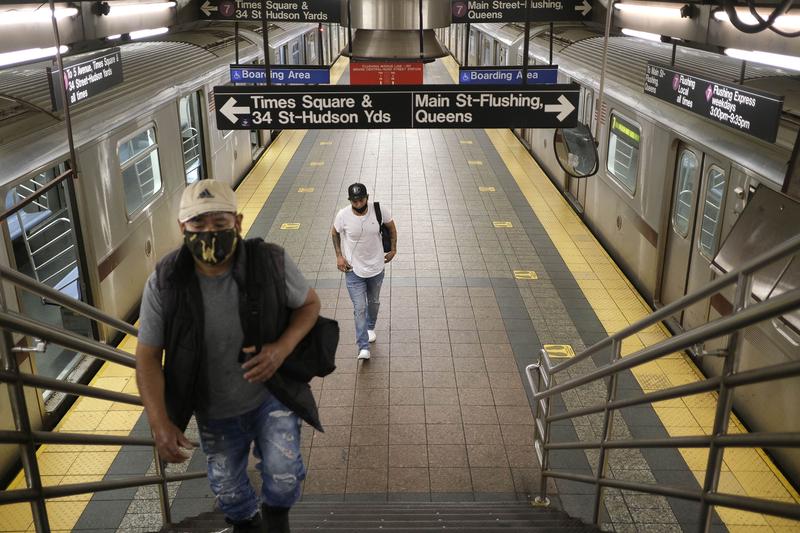an hour or an hour for a train that they would normally take much every 15, 20 minutes. On the subways and the buses, that could also mean an additional 15-minute wait, if they're cutting service. Cutting service like you said, also means cutting jobs, and the union, the Transit Workers Union strongly opposes this and say they'll fight it. Though, it looks like we're in for a very messy financial struggle in the very near future.
Brian Lehrer: Of course, the cycle is that fears of COVID-19 are one of the main reasons that ridership is so low and then that affects fair revenue. Then that affects potential layoffs and service cuts. Then ridership would probably go down even more because people wouldn't feel served, but you probably saw the NYU study that just came out that found the subways are actually pretty safe in COVID-19 terms. There've been other studies like that. Have you seen this latest one? Is it clear from it, if you have seen it, that the subways are safe for reasons other than that they're being sparsely populated?
Stephen Nessen: Right. The NYU study which I saw, I wrote about yesterday, actually looked at 120 cities over the past 10 years. They were looking at influenza, the flu spread similar to COVID and found there was not a connection between cities with high public transit ridership and the number of people who died from influenza or the flu. They drew the connection that the likelihood of people contracting the flu on public transit, there wasn't necessarily a connection.
There've been other studies of SARS, for example, in Hong Kong, in Beijing, as well as studying coronavirus in Korea, I believe, that there just wasn't a connection between the virus being spread and people riding public transit. Part of the study also was saying that-- the authors were saying that the way people ride the subways, it's not like people are shouting, generally, you've been on some loud cars, I'm sure, but generally, people keep to themselves, they read, they get on, they get off, they move along.
The doors open frequently, the subways have a lot of air circulation. There's been some fear and it seems like, "Oh, my God, I'm in a controlled small space. Someone has their mask down under their nose. Oh, my God, am I going to get it?" That hasn't shown itself, it hasn't bared itself in any researcher studies or scientific findings that the subway is the main source of COVID transmission.
Brian Lehrer: Is there any tension in terms of funding between the MTA and the state of New York? Now, the governor pretty much controls the MTA, but the state has a deficit too, but it's not nearly as in an emergency situation as the MTA is. Are they asking for more money from state coffers and getting resistance?
Stephen Nessen: That is certainly one of the avenues in which the MTA could help to shore up its funding so it doesn't have to make those cuts. Actually from what we've seen is the state has actually siphoned off about $600 million from funding that should go to the MTA. You may recall last year we got a bunch of taxes-- a bunch of new revenue sources passed for the MTA, like the internet sales tax, mansion tax, things like that.

